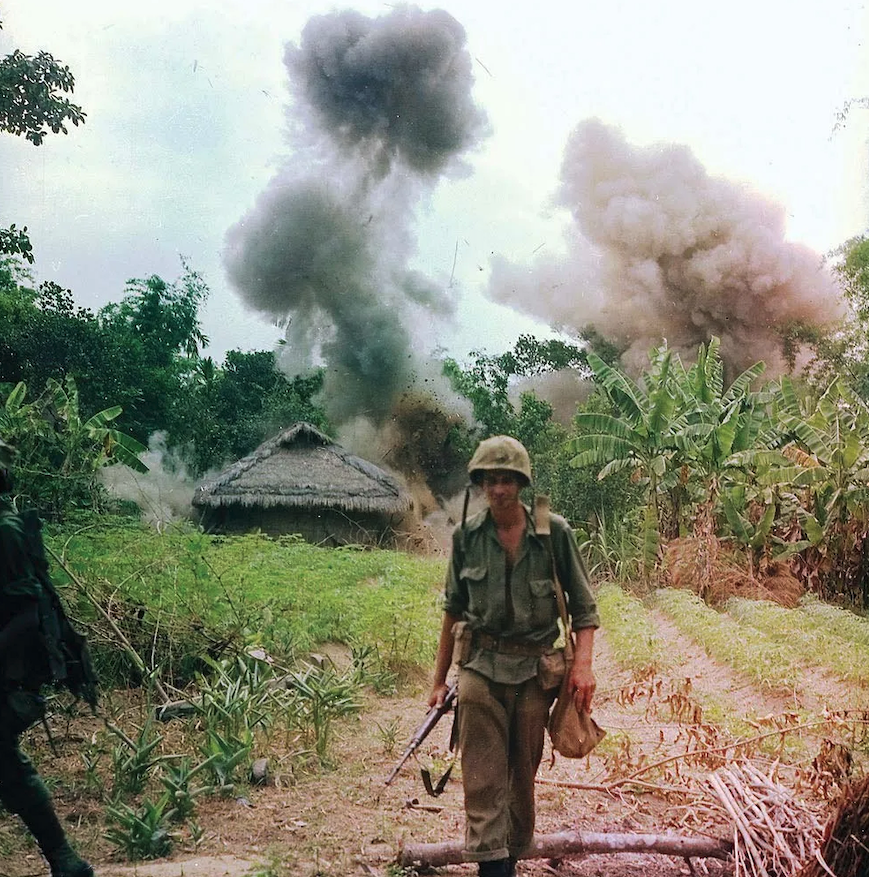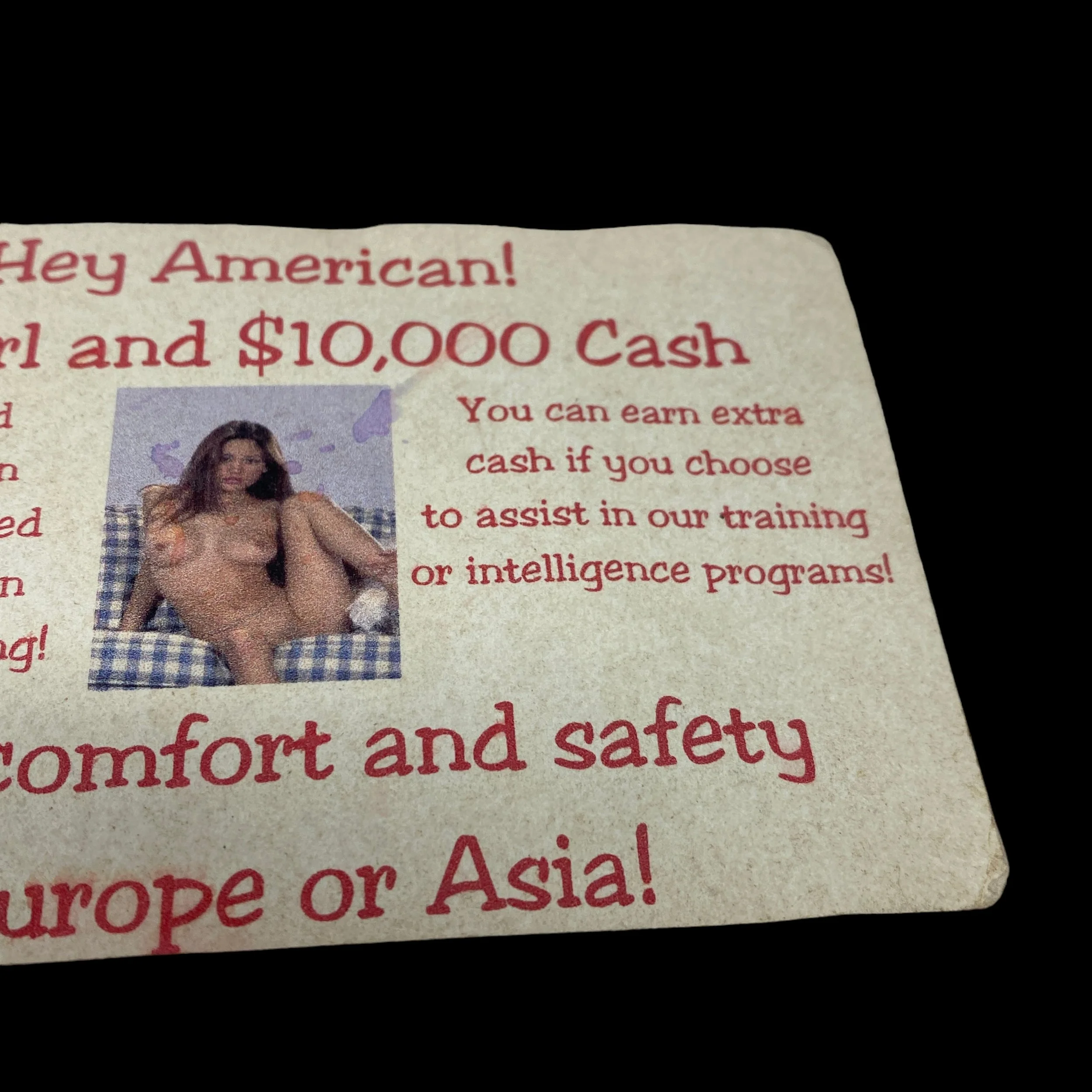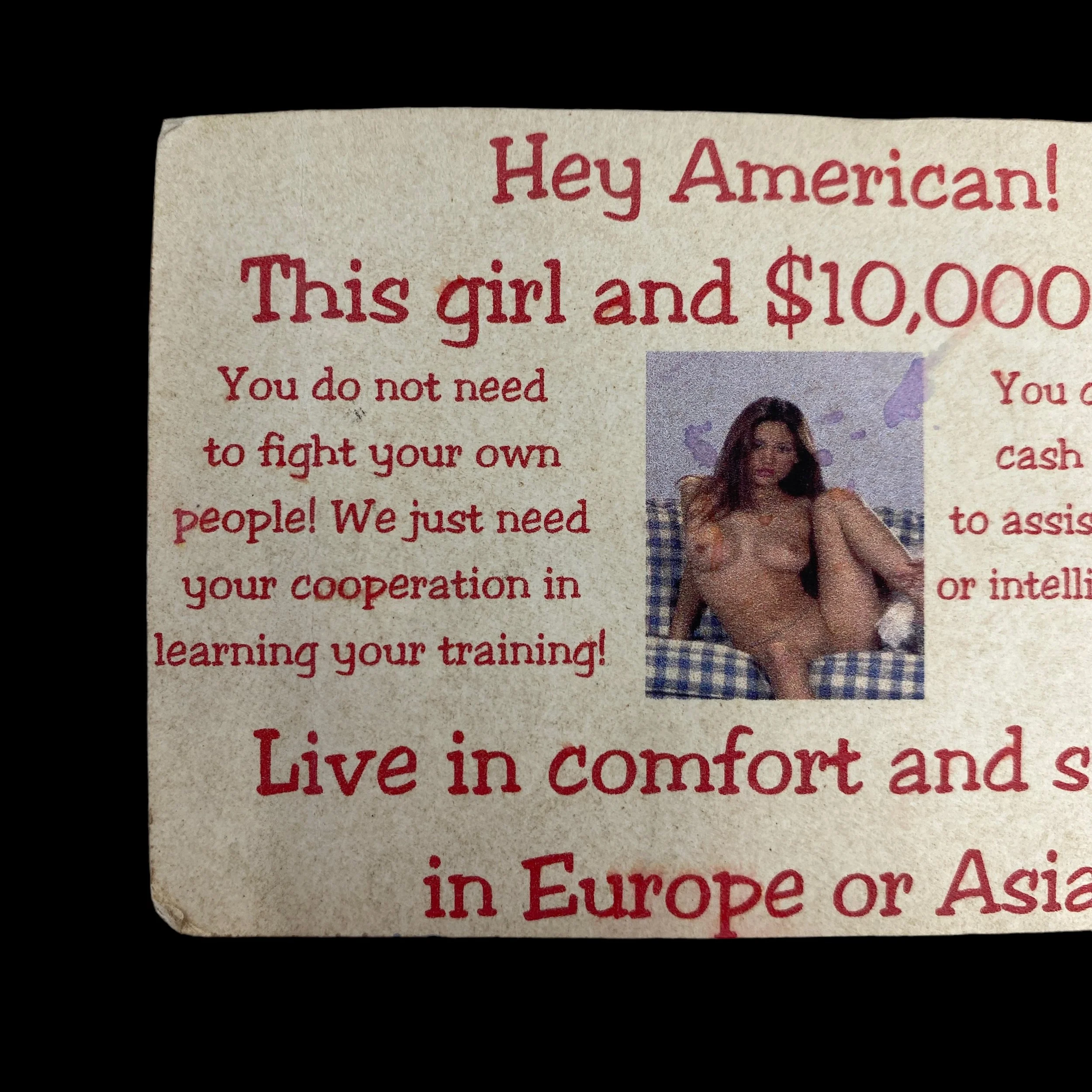VERY RARE! Viet Cong Psychological Operations Dropped Propaganda Leaflet on American Soldier's 101ST AIRBORNE SOLDIER BRINGBACK (**BE ADVISED - CONTAINS NUDITY**)















VERY RARE! Viet Cong Psychological Operations Dropped Propaganda Leaflet on American Soldier's 101ST AIRBORNE SOLDIER BRINGBACK (**BE ADVISED - CONTAINS NUDITY**)
Comes with a hand-signed C.O.A.
This extremely rare and museum-grade Vietnam War artifact is one of a few original bring back examples of Viet Cong propaganda dropped on American soldiers during the Vietnam War. This double sided propaganda leaflet comes from one of the rare, Viet Cong psychological operations in which they attempted to convince American soldiers to come over to their side, by offering them money and women as motivation.
The Vietnam War, spanning from 1955 to 1975, was a complex and controversial conflict that witnessed extensive use of propaganda by both sides. The Viet Cong, the guerrilla force allied with North Vietnam, employed various psychological warfare tactics to undermine the morale of American soldiers and potentially sway them to defect. One notable aspect of Viet Cong propaganda was its utilization of leaflets designed to appeal to the desires and vulnerabilities of American troops.
The Vietnam War was characterized by a unique blend of conventional warfare and guerrilla tactics. The Viet Cong, short for the People's Liberation Armed Forces of South Vietnam, operated as a clandestine force alongside the regular North Vietnamese Army. Facing a technologically superior enemy in the form of the United States, the Viet Cong had to resort to unconventional methods, including psychological warfare, to counterbalance their military disadvantages.
The Viet Cong recognized the importance of psychological warfare in shaping the course of the conflict. Their propaganda efforts were multifaceted, targeting both Vietnamese civilians and American soldiers. Leaflets, radio broadcasts, and other forms of communication were used to disseminate messages aimed at sowing discord among American troops and convincing them to question the purpose of their presence in Vietnam.
One intriguing example of Viet Cong propaganda during the Vietnam War is a double-sided leaflet that sought to exploit the desires and vulnerabilities of American soldiers. On one side of the leaflet, images of Vietnamese women and stacks of money were prominently featured, accompanied by enticing promises written in both English and Vietnamese. The leaflet appealed to basic human desires, suggesting that defecting to the Viet Cong-controlled side would bring financial gain and access to companionship.
The text on the leaflet often highlighted the stark contrast between the difficult conditions faced by American soldiers in Vietnam and the purported advantages awaiting those who switched sides. The Viet Cong capitalized on the isolation and stress experienced by many soldiers, creating a narrative that painted their forces as a welcoming alternative to the hardships faced within the American military.
To understand the impact of such propaganda, it is crucial to consider the historical context of the Vietnam War. American troops faced a challenging and hostile environment, both physically and psychologically. The Viet Cong exploited the anxieties and doubts that permeated the minds of these soldiers, hoping to break down their resolve and convince them to defect.
The leaflet, with its promises of wealth and companionship, tapped into the human elements of greed and loneliness that were prevalent in the war zone. By offering an alternative vision of a better life, the Viet Cong sought to undermine the commitment of American soldiers to their cause.
Determining the effectiveness of Viet Cong propaganda on American soldiers is a complex task. While some soldiers may have been influenced by the promises depicted in the leaflets, the majority remained committed to their mission. The U.S. military was well aware of the psychological warfare being waged against its troops and implemented countermeasures, including education programs and counter-propaganda campaigns, to inoculate soldiers against such attempts.
The use of propaganda by the Viet Cong during the Vietnam War reflects the complexities of psychological warfare in a conflict marked by ideological differences and unconventional tactics. The double-sided leaflet, with its promises of financial gain and companionship, stands as a testament to the Viet Cong's strategic attempt to exploit the vulnerabilities of American soldiers. Despite the challenges faced by U.S. forces, the majority remained steadfast in their commitment, demonstrating the resilience of the American military in the face of psychological warfare. The study of such propaganda provides valuable insights into the dynamics of wartime psychology and the strategies employed by both sides to gain a psychological edge in a protracted and contentious conflict.